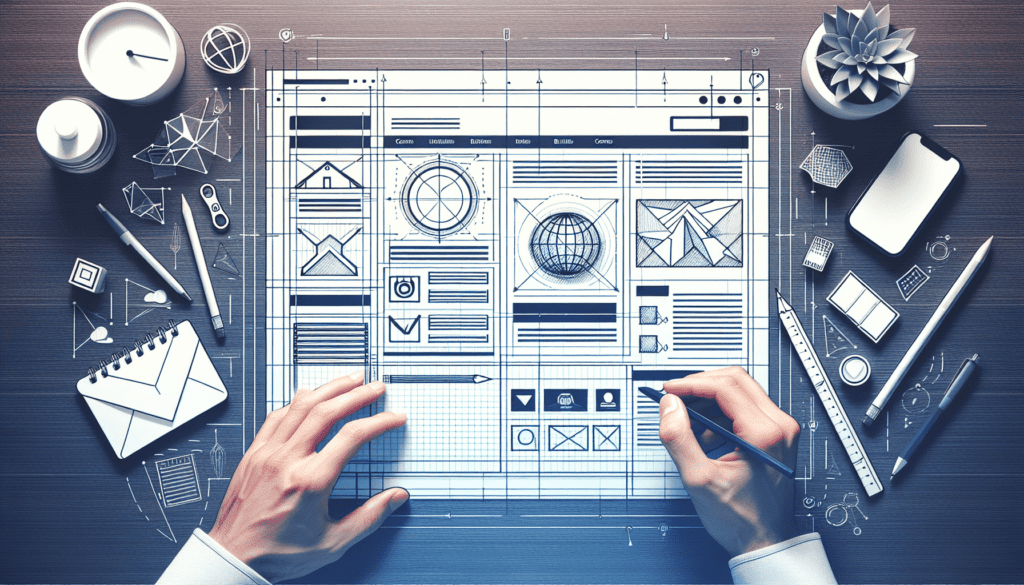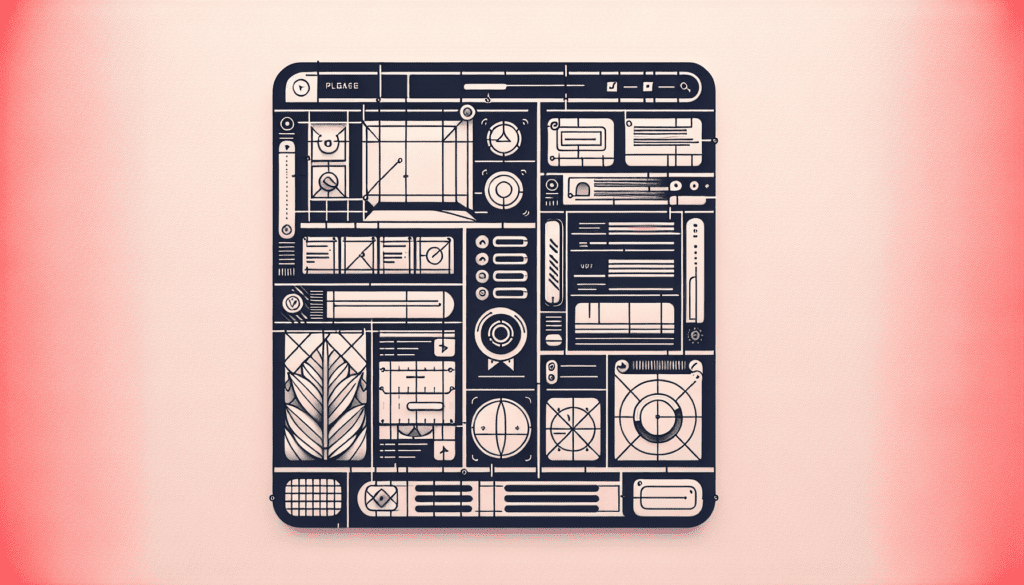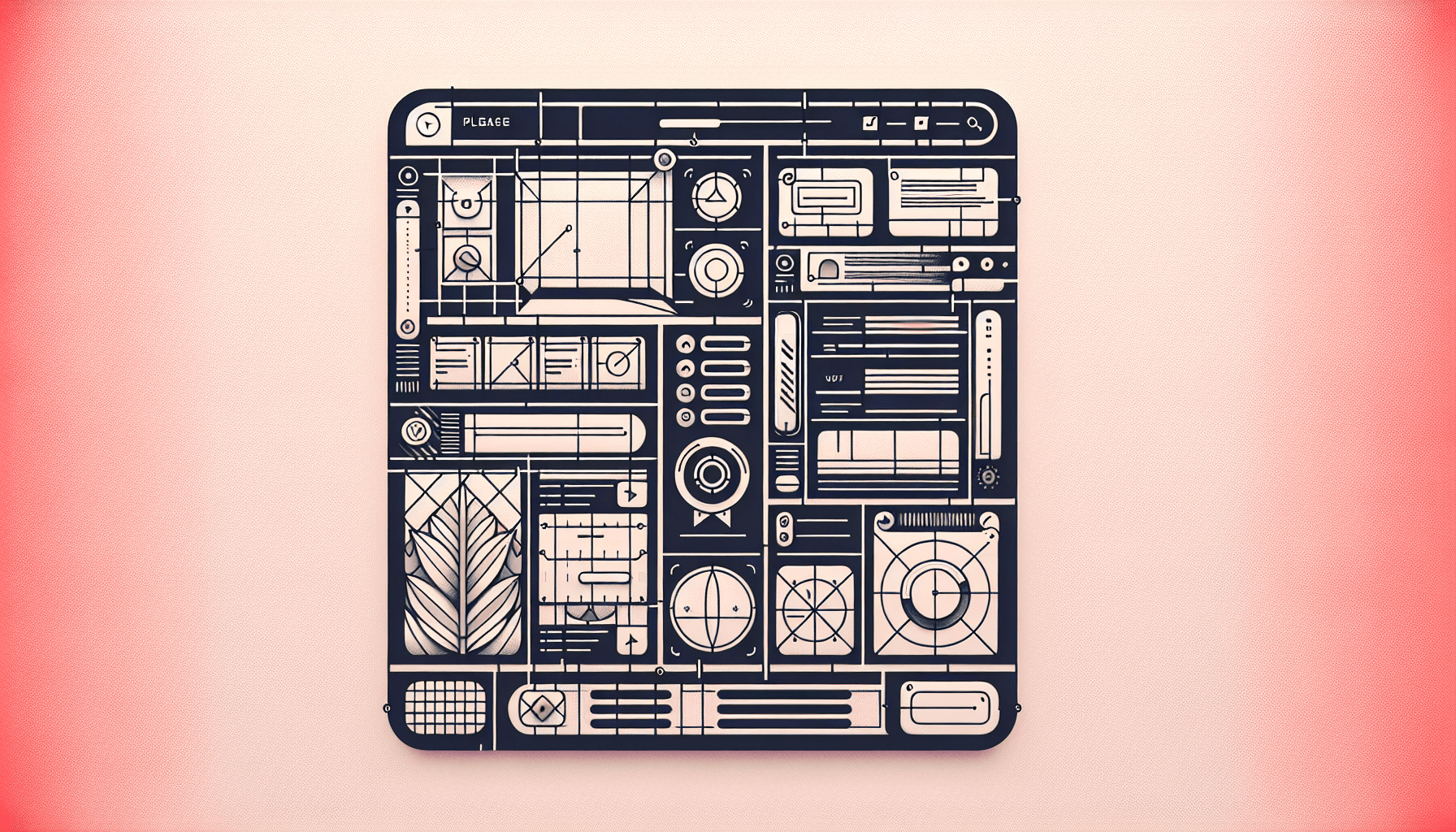Welcome to the exciting world of website creation! In this article, you will discover the essential role that UX/UI design plays in creating a successful and user-friendly website. UX (User Experience) design focuses on how a user interacts with a website, while UI (User Interface) design concentrates on the visual elements. Together, these two aspects work hand in hand to ensure that your website is not only visually appealing but also easy to navigate and use. So grab a cup of coffee and let’s dive into the fascinating world of UX/UI design in website creation!
Have you ever wondered how your favorite websites are designed to be user-friendly and visually appealing?
When you visit a website, have you ever stopped to think about how the layout, colors, and overall design make your experience smooth and enjoyable? If you’ve ever been curious about the behind-the-scenes work that goes into creating a website that not only looks great but also functions seamlessly, then you’re in the right place. In this article, we’ll dive into the fascinating world of UX/UI design and its crucial role in website creation.
Understanding the Basics of UX/UI Design
Let’s start with the basics. UX stands for User Experience, while UI stands for User Interface. These two elements are essential in designing a website that not only looks visually appealing but also provides a seamless and intuitive experience for the users.
When you land on a website, the UX design focuses on making sure that your overall experience – from navigation to content accessibility – is as smooth and user-friendly as possible. On the other hand, the UI design focuses on the visual elements of the website, such as colors, typography, and overall aesthetics.
The Importance of UX/UI Design in Website Creation
Imagine visiting a website where you can’t find what you’re looking for, the text is too small to read, or the navigation is confusing. How likely are you to stay on that website and come back for more? Not very. That’s where UX/UI design comes in.
The primary goal of UX/UI design is to create a website that not only looks visually appealing but also provides a seamless and intuitive experience for the users. By understanding the needs and preferences of the target audience, designers can create a website that not only meets but exceeds these expectations.

How UX/UI Design Impacts Your Website’s Success
The success of a website heavily relies on its UX/UI design. A well-designed website can result in increased user engagement, higher conversion rates, and ultimately, a positive impact on your business or brand. On the other hand, a poorly designed website can lead to high bounce rates, low retention rates, and a negative perception of your brand.
Good UX/UI design can help a website stand out from the competition, attract more visitors, and keep them coming back for more. By focusing on creating a positive user experience and an aesthetically pleasing design, you can create a website that not only looks great but also functions seamlessly.
Key Elements of UX/UI Design
When it comes to designing a website with a focus on UX/UI, several key elements play a crucial role in creating a successful user experience. Let’s take a closer look at some of these elements:
1. Navigation
Navigation is one of the most critical aspects of a website’s UX/UI design. Users should be able to navigate through the website easily and find the information they’re looking for without any hassle. The navigation menu should be intuitive, organized, and easily accessible from any page on the website.
2. Visual Hierarchy
Visual hierarchy refers to the arrangement of elements on a website in a way that guides the users’ attention. By using different font sizes, colors, and spacing, designers can create a clear hierarchy that helps users understand the content and navigate the website effectively.
3. Color Scheme
The color scheme of a website plays a significant role in creating a visually appealing design. Colors evoke emotions and can influence how users perceive a brand. A well-thought-out color scheme can help create a cohesive and engaging design that resonates with the target audience.
4. Typography
Typography is another crucial element of UX/UI design. The fonts used on a website should be easy to read, visually pleasing, and consistent throughout the site. By choosing the right fonts and sizes, designers can enhance the readability of the content and create a cohesive design.
5. Responsive Design
In today’s digital age, it’s essential for websites to be responsive and mobile-friendly. With an increasing number of users accessing websites on mobile devices, it’s crucial for designers to create a website that looks and functions well on all screen sizes.
6. Accessibility
Accessibility is another crucial aspect of UX/UI design. Designers should create websites that are inclusive and accessible to all users, including those with disabilities. By following accessibility guidelines and best practices, designers can ensure that all users can access and navigate the website effectively.

The Process of UX/UI Design in Website Creation
Now that we’ve covered the key elements of UX/UI design, let’s take a closer look at the process of designing a website with a focus on user experience and user interface:
1. Research
The first step in the UX/UI design process is research. Designers need to understand the target audience, their needs, preferences, and pain points. By conducting user research, surveys, and interviews, designers can gather valuable insights that will guide the design process.
2. Wireframing
After conducting research, the next step is wireframing. Wireframes are basic layouts that outline the structure and functionality of a website. They serve as a visual guide that helps designers plan the layout, content, and navigation of the site before moving on to the visual design phase.
3. Prototyping
Once the wireframes are approved, designers move on to prototyping. Prototypes are interactive models that allow stakeholders to test the functionality of the website before it goes live. By creating prototypes, designers can identify and address any usability issues early in the design process.
4. Visual Design
After prototyping, designers focus on the visual design of the website. This includes choosing colors, typography, images, and other visual elements that will bring the website to life. The visual design phase is where designers create a cohesive and engaging design that resonates with the target audience.
5. Testing and Iteration
Once the visual design is complete, the website undergoes testing and iteration. Designers test the website for usability, functionality, and overall user experience. Based on user feedback and testing results, designers make necessary changes and iterations to ensure that the website meets the needs and preferences of the target audience.
6. Launch
After testing and iteration, the final step is to launch the website. Once the website is live, designers continue to monitor its performance, gather feedback, and make improvements as needed. Launching a website is just the beginning – ongoing monitoring and optimization are essential to create a successful and user-friendly website.
Conclusion
In conclusion, UX/UI design plays a crucial role in website creation. By focusing on creating a positive user experience and an aesthetically pleasing design, designers can create websites that not only look great but also function seamlessly. From navigation and visual hierarchy to color scheme and typography, every element of UX/UI design contributes to creating a successful website that attracts visitors and keeps them coming back for more. So, the next time you visit your favorite website, take a moment to appreciate the thoughtful design work that goes into making your experience enjoyable and engaging.











